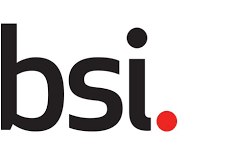Please be advised that a New Work Item Proposal has been loaded to the BSI Standards Development Portal for comment.
Any comments received will be submitted to the national committee AMT/4 “Industrial data and manufacturing interfaces” for consideration when deciding the UK response to the associated Standards Development Organisation.
Proposal: ISO/NP 25500-100, Supply chain interoperability and integration — Part 100: Verification of Supply Chain Data.
Please visit https://standardsdevelopment.bsigroup.com/projects/9023-09221
Comment period end date:08/11/2023
Proposal: ISO/NP 25500-110, Supply chain interoperability and integration — Part 110: Verification of certificates in the supply chain.
Please visit https://standardsdevelopment.bsigroup.com/projects/9023-09222
Comment period end date:08/11/2023
Proposal: ISO/NP 25500-120, Supply chain interoperability and integration — Part 120: Verification of localization data.
Please visit https://standardsdevelopment.bsigroup.com/projects/9023-09223
Comment period end date:08/11/2023
Proposal: ISO/NP 25500-240, Supply chain interoperability and integration — Part 240: Strategic sourcing concepts, principles, and data requirements.
Please visit https://standardsdevelopment.bsigroup.com/projects/9023-09224
Comment period end date:08/11/2023
Proposal: Additive Manufacturing — Data — Data packages for AM parts
Please visit ISO/ASTM PWI 52951
Comment period end date:12/11/2023
Scope
This document provides the methods, parameter sets and models to develop and utilize a data package for a part created using AM technologies (AM part). This document is scoped to the information requirements associated with workflow of the fabrication of an AM part, from design to acceptance. Peripheral information related to entities such as organization, facility, operator, security, and others is addressed for sake of completeness; but is not the focus of this document and can be defined elsewhere. This document provides the means to develop an organizational or applicationspecific data package for the communication between and amongst the designer, the manufacturer, and all acceptance authorities, among other potential stakeholders.
This document does not impose a plan of execution to produce an AM part, though a digital thread is provided to establish a referenceable information workflow.
The requirements set forth in this document are based on the fabrication of a part using the PBF-LB/M process. While specific details directly relate to PBF-LB/M, generalized workflow requirements can be related to any AM process.
Purpose
Additive Manufacturing (AM) processes follow many of the same manufacturing steps observed in more “traditional” manufacturing processes, from design to manufacture to inspection. As an advanced manufacturing process, AM introduces additional complexities to those steps within an AM workflow. AM-specific information is necessary to specify, verify, and archive data related to parts that are manufactured using AM technologies. Key information associated with those steps includes relevant facility, operator, machine, process, material, postprocess, inspection and other information (see ASTM F3490). This document is developed on the premise that an overarching digital thread can represent the workflow of a part fabricated using an AM process, such as shown in Figure 1. This digital thread is comprised of the information requirements designed, procured, manufactured, and inspected. By identifying and selecting specific information requirements from the digital thread, a data package for a specific part can be developed for a specific application or scenario associated with each individual stage of the workflow. data package serves to provide an organization with a means to specify and organize part information requirements specific to a given application or scenario. This document is developed to maximize an organization’s flexibility when determining its data package requirements for various scenarios. The modularization of information requirements and their level of specificity supports the general, broad adoption of this document while also supporting specific organization needs and scenario requirements. In this sense, this document uses modular, multi-tiered information requirements to support the development of data packages for various scenarios with varying levels of control. Configuration management practices are used to identify acceptable representations, including file formats and file types, for given data package requirements. In transitioning from a design to a manufactured part, the AM digital thread progresses through many digital representations including: CAD design, simulation, tessellated geometry; sliced geometry; build file; part with build data; and part with evaluation data. At each of these stages, the digital provenance of the part is evolving, with its digital twin maturing from the generation of new data at every stage. As a digital representation of the intended physical counterpart, the digital twin provides important insight into the state of the part through its design to product transformation. When accepting a final part, it is important to have confidence in the processes used in the fabrication of the part, since differences in implantation can mean different parts. The digital twin provides an important resource from which this confidence can be gained but can create its own uncertainty if not well-defined and well-understood, with the requirements identified in the data package.
If you have any comment or need more information, please contact Sami Ortiz at [email protected]

